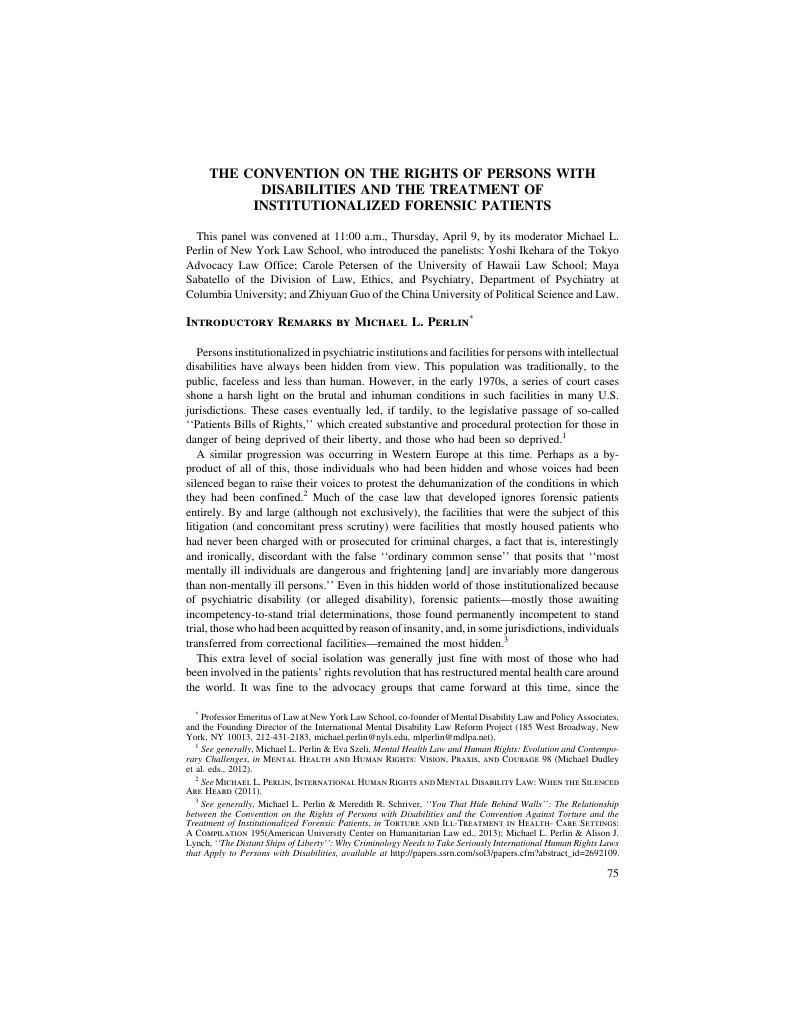Article contents
Introductory Remarks by Michael L. Perlin
Published online by Cambridge University Press: 20 January 2017
Abstract

- Type
- The Convention on the Rights of Persons with Disabilities and the Treatment of Institutionalized Forensic Patients
- Information
- Copyright
- Copyright © American Society of International Law 2016
References
1 See generally, Perlin, Michael L. & Szeli, Eva, Mental Health Law and Human Rights: Evolution and Contemporary Challenges, in Mental Health and Human Rights: Vision, Praxis, and Courage 98 (Dudley, Michael et al. eds., 2012)Google Scholar.
2 See Michael L.Perlin, International Human Rights and Mental Disability Law: When the Silenced Are Heard (2011).
3 See generally, Perlin, Michael L. & Schriver, Meredith R., “You That Hide Behind Walls”: The Relationship between the Convention on the Rights of Persons with Disabilities and the Convention Against Torture and the Treatment of Institutionalized Forensic Patients, in Torture and Ill-Treatment in Health-Care Settings: A Compilation 195 (American University Center on Humanitarian Law ed., 2013)Google Scholar; Michael L. Perlin & Alison J. Lynch, “The Distant Ships of Liberty”: Why Criminology Needs to Take Seriously International Human Rights Laws that Apply to Persons with Disabilities, available at http://papers.ssrn.com/sol3/papers.cfm?abstract_id=2692109.
4 Convention on the Rights of Persons with Disabilities, G.A. Res. 61/106, U.N. Doc. A/RES/61/106, arts. 3, 15-17, 22 (Dec. 13, 2006).
5 Lord, Janet, Shared Understanding or Consensus-Masked Disagreement? The Anti-Torture Framework in the Convention on the Rights of Persons with Disabilities?, 33 Loy. L. A. Int’l & Comp. L. Rev. 27 (2010)Google Scholar.
- 1
- Cited by


